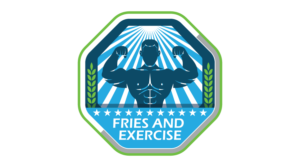In the evolving landscape of personal development and self-awareness, Human Design has emerged as a powerful tool for individuals seeking alignment with their authentic selves. But beyond individual analysis, Human Design also offers insights into how people interact and influence one another in group settings. One of the most insightful frameworks in this realm is the Human Design Penta Chart, a dynamic approach to understanding collective energy.
What is the Human Design Penta Chart?
The human design penta chart is a unique configuration used to interpret the energetic dynamics within small groups, typically consisting of three to five individuals. Unlike individual charts, which focus on personal centres and channels, the Penta chart brings together multiple body graphs to form a collective energy structure. This configuration reveals how individuals combine to form a unified entity, often referred to as a “Penta.”
A Penta has its own identity, functions, and energy flow, and it operates independently of the personalities within it. When the energy of a group aligns harmoniously, the Penta functions efficiently—often mirroring the group’s shared purpose, productivity, or dysfunction.
Why Penta Charts Matter in Group Environments
Many work teams, families, and partnerships unknowingly form Pentas. When people gather to achieve a goal, their energetic fields merge, sometimes harmoniously and other times discordantly. The Human Design Penta Chart helps decode these group dynamics, offering insights into:
- Leadership balance: Who naturally takes charge, and who may resist direction?
- Communication flow: Where are energy bottlenecks or gaps in shared understanding?
- Role alignment: Are individuals in roles that align with their energetic contributions?
Understanding these components allows groups to restructure tasks, reassign responsibilities, or even shift group membership to improve harmony and efficiency.
Learning Through Human Design Education
Education is key to unlocking the full potential of the human design penta chart. Training programs and workshops provide learners with the foundational knowledge of Human Design before diving into group configurations. This progression ensures that participants not only understand their own energetic blueprint but are also equipped to interpret the relational dynamics of others.
Courses often cover:
- The mechanics of how Penta charts are created
- The differences between a functional and dysfunctional Penta
- Energetic “roles” within the group (such as managerial, creative, or supportive roles)
- Practical applications in business teams, families, and communities
Workshops may include real-time analysis, case studies, and even live chat readings to deepen participants’ understanding and confidence in using this advanced Human Design tool.
The Power of Collective Energy Awareness
With more people working remotely or navigating complex family structures, group dynamics have become more nuanced than ever. By applying the principles of the fHuman Design Penta Chart, individuals can become more attuned to the subtle energies that affect group cohesion, output, and emotional well-being.
This awareness leads to:
- Improved decision-making
- Increased group harmony
- Greater productivity in workspaces
- Enhanced empathy and understanding among members
It can even assist coaches, therapists, and HR professionals in tailoring group interventions or support structures based on energetics rather than guesswork.
Conclusion: A Deeper Pathway with The Eye Of Innocence
For those seeking a deeper, transformative understanding of Human Design, including immersive insights into the human design penta chart, The Eye Of Innocence offers certified education programs, personal readings, and workshops tailored to both individuals and collectives. Whether you’re navigating group dynamics at work, home, or within a spiritual community, their expert-led offerings help unlock the unseen forces shaping your experiences. Through their thoughtfully designed services, learners and clients alike are empowered to live more harmoniously and authentically—both individually and as part of a group.
